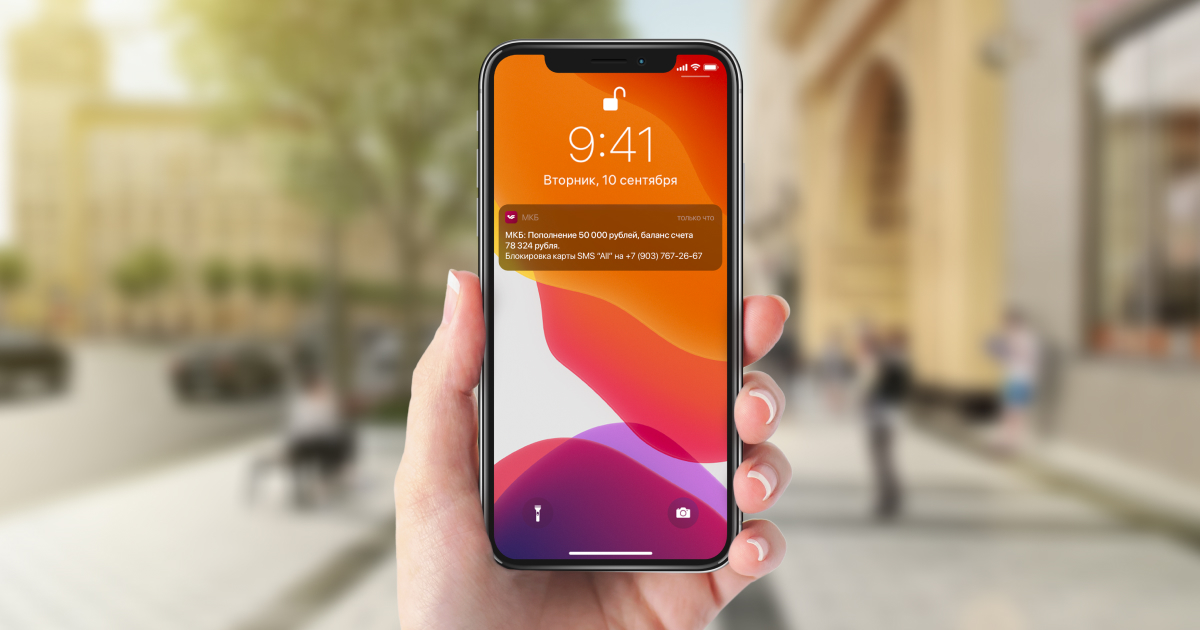
Colleagues, hello! Like any bank, we inform our clients - individuals via SMS and spend a lot of money on this. Last year, we carried out a thorough review of SMS communications in order to reduce costs.
We work, like many participants in this market, both directly with operators and with SMS aggregators, depending on where the cost of SMS is cheaper.
We did not accept the idea of converting 85% of messages into push messages, because we did not believe in its realism: the SMS standard is simple and goes back to 1984, while push messages suggest significant variability and have been actively developing only for the last 10 years. In addition, the structure of our customer base was such that most of them used push-button phones, without push capability.
We started by looking for elephants that could be shot painlessly, and we found one. The SMS with the text "You are entering the mobile bank date-time" did not carry much sense, since it was sent to the same device from which you were logged in at that moment. Also, its position was aggravated by the cost per unit: it did not belong to the cheapest - transactional (balance change), but to service, which, on average, is twice as expensive. We left this notification via SMS only in one case: when a client enters the mobile bank from a new phone. By the end of 2019, by canceling this message, we received 45% reductions in SMS costs.
Next, we turned to the search for duplicate messages for one operation, such appeared in the case of desynchronization of the initiating systems. For example, when depositing money to a card through the ICB terminal, the client received two messages: one from the card processing, the second from the system that controls the terminals.
In the next step, we turned our attention to the payment mechanism. You will be billed for the number of segments sent. This meant looking at the number of segments and shipping costs.
Everyone probably knows the length of the segments, Wikipedia clearly sets them up with a table:

In terms of segments, the atomic unit of SMS, our work was divided into several areas.
The first is to bring the most massive transactional SMS about balance changes to one segment. We coped with this by excluding unnecessary information from the text, such as the date of the transaction, and also replacing the currency in the amount: "rub" with "r".
We left messages not very popular and not very important (but obligatory) to the client in transliteration in order to put more text in one segment. At the same time, the same message, but sent via push in our mobile application, is translated into Russian. Secondly, we thought about how to ignore the segment length for older clients, and send all messages in Cyrillic so that grandparents would understand everything on the fly, but this revision has not yet been implemented.
The third area was work with customers with a request to revise the texts and wording for abbreviations. It was a good hygienic task, but to be honest, it did not have a super-scale effect.
In the process, we came across interesting moments. For example, the costs of transactional SMS to Beeline subscribers after bringing them to one segment for some reason did not decrease. Digging into billing, we realized that each message still consists of two segments. Surprised, we went to look at the delivered messages and found among the transliteration the word "balance" in Cyrillic, inserted either by a template, or by the Beeline handler. It was a science for us that we need to thoroughly check the result for compliance with expectations.
Above I mentioned that it is the sent messages that are paid, respectively, it made sense to look at the degree of message delivery. Here we decided to enrich the composition of the numbers to which the sending is done. If earlier we did not send to landline and 8-800 numbers, now we try not to send messages to numbers to which, for example, advertising SMS were not delivered more than eight times. Moreover, if SMS was not delivered while our client was in another country, the number is not considered inactive.
In parallel with these activities, intense joint work with the aggregator was carried out so that informational messages were considered by operators as service messages, and not advertising ones. This line of work has made a significant contribution to reducing costs, since the advertising message is twice as expensive as the service one.
I would like to say that all this would not have happened without our former colleague Alexei, who helped us with wise advice. Without our colleague Ivan, who implemented all the ideas and generated dozens of new ones. And also without our colleagues in the aggregator, who actively helped us throughout the entire time. This project allowed us to continue sending messages until the end of the year without increasing the budget, while the number of communications per client has grown by almost one and a half times.
This year, when we have time after the near-like activities associated with the transition to remote control, we, realizing that there is still work to be done, are planning to generate regular reports for business customers, look towards the validation of the effect from SMS mailings, work out a mechanism regular inventories of templates, texts and rules. If it turns out interesting, we will definitely share.